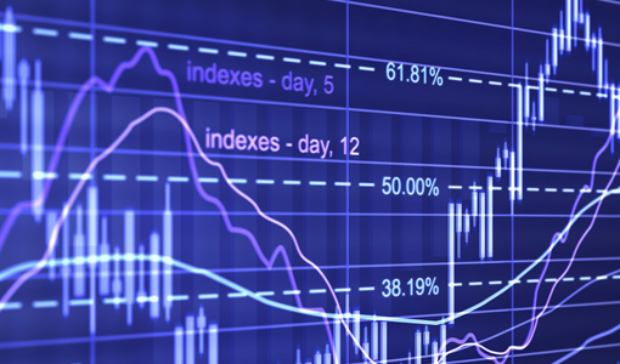As a professor of finance, I am frequently asked by people from all walks of life, but especially by the media, “What is going to happen to the economy next year?” or “What will happen after the subprime crisis?” Recently, the question I have been asked most often is, “What will happen after the next election?”
At the risk of reader disillusionment, I must confess the economist’s secret: Forecasting is actually a rather mundane matter and not all that magical. In a nutshell, forecasting is an if/then activity, and once the assumptions are determined, the forecast naturally follows.
The if/then nature of economics
An old academic joke highlights the if/then or “cause and effect” nature of economics. In this joke, a chemist, a physicist and an economist are trapped on an island with no tools and no food except a can of beans. The chemist proposes that if the can is buried in the hot sand it will heat up, causing the can to explode. The economist chastises him, pointing out that the beans would then no longer be edible. The physicist suggests that the beans be dropped from a palm tree onto a rock to break the can open. He is chastised for the same reason as the chemist. The physicist and the chemist now both look at the complaining economist and ask what she would suggest. She turns to them and says, “Let’s assume we have a can opener.”
Obviously, the nature of the assumptions will determine the nature of the outcome. If the majority of the major assumptions are positive, the forecast will be positive. If the majority are negative, then a negative forecast will likely follow. The real challenge to economic forecasting is to pick assumptions that are not likely to change. Of course, events such as an unexpected change of leadership in a Middle Eastern country could make at least some of the economist’s assumptions incorrect, in turn potentially causing an incorrect forecast. Since economists are aware of this, they usually try to qualify their forecast based on different assumption scenarios.
This explains the origin of another old joke used by both Harry Truman and RonaldReagan who said they wanted to find a one-armed economist because they got tired ofhearing from their advisers, “This is what could happen, but on the other hand…”
Current realityBefore one forecasts, one must acknowledge the current reality. This sounds simple, but it can be a challenge. I have given more than 30 different media interviews during the past year on the subprime crisis and other economictopics. I frequently find myself being asked to comment on the severity of the “recession we are currently in.” My answer in July 2008 was the same as it was in 2007: we have not had a recession yet.
The official definition of a recession is two consecutive quarters of negative economic growth. At this point in time, we have not had one quarter. Slow growth may not be any fun, but it is still growth, so it is not a recession. And even if the third quarter of 2008 were to show negative growth, we could still not cite a recession because the official definition is two quarters in a row, not one.
Our current economy looks like this: First, unemployment as of June 2008 was 5.5 percent which, while slightly higher than last year, is still quite low when compared to history; second, even though there was a net decrease in jobs in June 2008, hourly earnings still increased $.06 per hour that same month; third, the Consumer Price Index rose .6 percent in June, but productivity rose 2.6 percent in the first quarter of 2008 alone. The assessment is that while economic conditions are not ideal in certain geographic areas and in specific market segments, the overall macro economy today is not all that dire. Just ask someone from my age group who graduated from college when the unemployment rate was over 10 percent.
Let the markets tell usAs stated earlier, the assumptions drive the forecast, and one way to find assumptions that utilize as much essential information as possible is to use the forecasts that the market itself actually provides. Embedded in current commodity prices, futures prices and interest rates are forecasts that the market has already made. For instance, the price of oil today is not just based on supply and demand at this instant but also on the market’s forecast of what it thinks the supply and demand situation in the future will be. If investors thought with great certainty that the priceof oil would be $50 higher next week, the incentive to buy today and store it for resale would be so great that the market price would go up this week.
This is what the market was trying to tell us in July 2008. The yield curve (the relationship between the interest rates on long- versus short-term government securities) was slightly positive, meaning longer-term rates were a little higher. When long-term rates are higher than short-term rates, the market is trying to tell us that interest rates might go up in the future. In this case, rates are expected to go up slightly.
This message is consistent with the reports that overall inflation has been rising, but at low, single-digit rates. In addition, the relationship between the price of oil on the spot market and the price on the futures market suggests that with the information currently available, the market does not expect major increases over the next year and perhaps even some slight and occasional declines. Finally, the value of the dollar relative to other currencies is in a historically low range, but the futures market expects some slight appreciation of the dollar. Of course, as new information about geopolitical situations, technological breakthroughs and so forth come to light, the market will incorporate that information into its forecast and cause today’s prices to change as well.
Political assumptionsWe have a presidential election coming up, and people tend to fixate on the policies advocated by the two candidates, Sens. Obama and McCain. The problem with forecasting at this point in the campaign, is that neither camp is being overly specific on policy details, and even if they are, the probability of positions changing as we get closer to the election increases. From the economist’s perspective, what matters more is not the candidates’ positions today, but the policy effects that can be realistically enacted after the election.
The key to enacting policies and determining their effects lies not just in the presidential race but in the overall political landscape. For instance, while some polls have Sen. Obama ahead and others have shown Sen. McCain with a lead, the more significant factor is that whoever is president will likely have to deal with a Congress lead by a Democratic majority; therefore, we can make some assumptions regardless of who wins the presidential election. First, the current tax cuts from 2001 will likely end, but specific cuts to various groups may be made instead. Second, substantial government spending will continue to occur in total no matter who is in power, but the composition of the spending might be somewhat different. Third, due to geopolitical realities, substantial military spending will likely occur for the next two years. Like regular government spending, however, the composition of where this takes place might differ depending upon who wins the election.
The most significant governmental assumptions concern the Federal Reserve. A current common view holds that the Federal Reserve is unlikely to cut rates again and, if anything, rates may increase slightly.
The former policy of cutting rates to keep adjustable rate mortgages manageable for the average homeowner has reached its limits. One effect of this policy was that dollars were created by our government at a faster rate than other countries, resulting in the dollar trading at an all-time low value. At this point, our foreign investors need assurances that their dollar investments will not decline in value further, so the policy of the Federal Reserve would likely switch from cutting interest rates to stabilizing the dollar. Overall, we are starting to see more legislation by Congress and immediate actions by the Federal Reserve that result in selective bailouts of firms rather than a more universal policy of cutting rates.
A historical perspective is necessary when looking at the problems in our financial and real estate sectors. Few people seem to realize that more than 2,000 financial institutions had to be closed during the 1980s and substantial economic growth occurred anyway.
While people may be worried by the recent fall in real estate prices, before the decline the value of typical residential homes had increased over 80 percent from 2000; so most homeowners still have considerable equity. Additionally, subprime loans may have made up a substantial amount of newly created mortgages, but they are still a very, very small fraction of the total existing mortgages, and a majority of subprime mortgages are not in default.
So, what can we expect?With the information that is available at this time, the economy has definitely slowed down, but we technically have not had a recession. Due in large part to our currently low interest rates, combined with the likely continuation of our large government budget deficit due to the historical resistance of politicians to cutting spending before elections, I would guess economic growth to stay in the 0 to 1 percent range for the next year. U.S. growth will continue to be somewhat curtailed over the next year by lower corporate capital and real estate spending, but exports may continue to improve because of the low value of the dollar.
In conclusion, if someone could tell an economist the outcome of an election, the level of stability on the world political scene and what is going on inside the minds of the Federal Reserve Board of Governors, then forecasting would be easy. Having said that, my “one-handed” forecast is thatwe should expect a period of flat economic activity for a while after the election. Until some of the assumptions become known facts through the workings of the political process, then businesses and consumers can not make the long-term plans that can lead to stronger economic growth.
In the meantime, one should take some solace in the fact that no matter who wins the 2008 presidential election, by historical standards, we are currently not in such bad shape.
Dr. Dave Vang is a professor and chair of the Finance Department at the Opus College of Business. He has a B.A. from St. Cloud State University and a Ph.D. in economics with a concentration in finance from Iowa State University.





